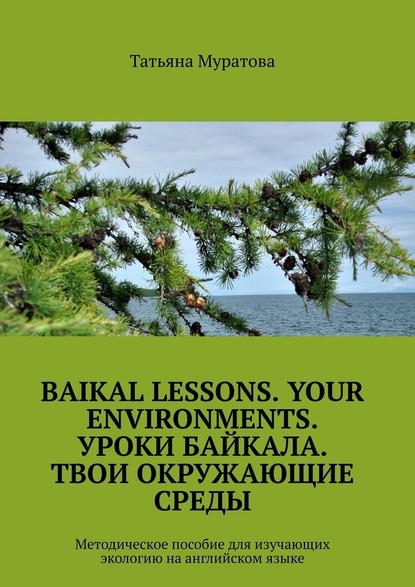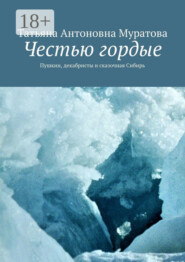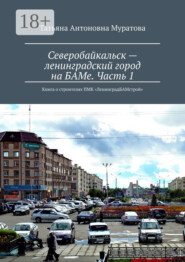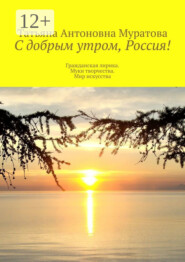По всем вопросам обращайтесь на: info@litportal.ru
(©) 2003-2024.
✖
Baikal lessons. Your environments. Уроки Байкала. Твои окружающие среды. Методическое пособие для изучающих экологию на английском языке
Настройки чтения
Размер шрифта
Высота строк
Поля
12.«English for schoolchildren»
«Drofa» Moscow 1999
13. «English» N. Sikorskaya
Moscow 1992
14. «English for Managers» L. Salnikova
Moscow 1992
15. A Comprehensive Program of Land Use Policies for the Russian Portion of the Lake Baikal Region.
THE LAKE BAIKAL REGION IN THE TWENTY-FIRST CENTURY: A MODEL OF SUSTAINABLE DEVELOPMENT OR CONTINUED DEGRADATION?
A cooperative project prepared at the request of the:
Buryat Republic
Chita Oblast
Irkutsk Oblast
by the:
Center for Citizen Initiatives – USA
Center for Socio-Ecological Issues of the Baikal Region
Davis Associates
Russian Academy of Sciences
March 1993
16. BAIKAL AS A WORLD NATURAL HERITAGE SITE: RESULTS AND PROSPECTS OF INTERNATIONAL COOPERATION
Edited by Nicolai L. Dobretsov
Publishing House SB RAS Novosibirsk 1999
TABLE OF CONTENTS
Bibliography
I. General Items
1. Environmental Protection
2. Acid Rains
3. Pollution
4. Air and Land Pollution
5. Air and Water Pollution
6. Oil and Gasoline
7. Green Management
8. A Unique Lake
9. Lake Baikal is in the World Heritage Site
10.The Fragile Environment
11.The Road from Rio
12. Eco-politics
13. Laws
II. Your Basic Environments
1. Water
2. Soil
3. Wildlife
4. Forests
5. Plants
III. Your Unique Environments
1. Desert
2. Dunes
3. Marine
4. Pond
5. Range
IY. Summary
1.Environmental and Cultural Education
2. Eco-Babble
Y. Supplement
1. The ecological conference
2. Region Olympics «Ecology in English»
3. Questions
4. Certificates
5. Scientific project
6. Signs of hope
7. Strategies for a sustainable development of tourism in the Baikal Region
I. GENERAL ITEMS
Economists have long thought of the environment as an unlimited source of resources. They have thought that the atmosphere, forests, rivers and seas are capable of absorbing all the rubbish the economy throws into them. In fact, the economy and the environment are closely related. The environment supplies the economy with all its resources, such as water, timber, minerals and oil. The environment has to absorb all its waste products.
Nevertheless, some economists have always argued that pollution damages the resources. For example, pumping waste gases from a power station does not get rid of them. The waste gases cause acid rain; this leads to forest damage an therefore reduces the resources of forestry industry.
There are many consequences of damaging the environment. One of them is acid rain. Another one is water shortage resulting from abuse of arable lands in agriculture. The third one is destroying the ozone layer of the Earth through pollution from factories and plants. The fourth problem is damage to water and soils. The fifth one is damage to wildlife: numerous species of animals and plants can disappear. Lastly, the most serious danger arising from damaging the environment is the result of the above-mentioned consequences. This is the danger for the life and health of the man.
The territories of the former Soviet Union are suffering many environmental problems. Many of these problems have been caused by economic activities. Apart from the effect of Chernobyl disaster, the worst problem is probably in the area around the Aral Sea. Cotton growing in the region has used huge quantities of water, and the sea’s level has fallen by 14 yards. This destroyed fishing industry and led to a damage in soils, crops and wildlife. Many forests in the north of European Russia and the Far East are under threat. A system of dams on the Volga has caused damage to fish.
If we are unable to learn to use the environment carefully and protect it from damage caused by man’s activities, very soon we’ll have no world to live in.
Topical Vocabulary.
an unlimited source of resources – неисчерпаемый источник ресурсов
«Drofa» Moscow 1999
13. «English» N. Sikorskaya
Moscow 1992
14. «English for Managers» L. Salnikova
Moscow 1992
15. A Comprehensive Program of Land Use Policies for the Russian Portion of the Lake Baikal Region.
THE LAKE BAIKAL REGION IN THE TWENTY-FIRST CENTURY: A MODEL OF SUSTAINABLE DEVELOPMENT OR CONTINUED DEGRADATION?
A cooperative project prepared at the request of the:
Buryat Republic
Chita Oblast
Irkutsk Oblast
by the:
Center for Citizen Initiatives – USA
Center for Socio-Ecological Issues of the Baikal Region
Davis Associates
Russian Academy of Sciences
March 1993
16. BAIKAL AS A WORLD NATURAL HERITAGE SITE: RESULTS AND PROSPECTS OF INTERNATIONAL COOPERATION
Edited by Nicolai L. Dobretsov
Publishing House SB RAS Novosibirsk 1999
TABLE OF CONTENTS
Bibliography
I. General Items
1. Environmental Protection
2. Acid Rains
3. Pollution
4. Air and Land Pollution
5. Air and Water Pollution
6. Oil and Gasoline
7. Green Management
8. A Unique Lake
9. Lake Baikal is in the World Heritage Site
10.The Fragile Environment
11.The Road from Rio
12. Eco-politics
13. Laws
II. Your Basic Environments
1. Water
2. Soil
3. Wildlife
4. Forests
5. Plants
III. Your Unique Environments
1. Desert
2. Dunes
3. Marine
4. Pond
5. Range
IY. Summary
1.Environmental and Cultural Education
2. Eco-Babble
Y. Supplement
1. The ecological conference
2. Region Olympics «Ecology in English»
3. Questions
4. Certificates
5. Scientific project
6. Signs of hope
7. Strategies for a sustainable development of tourism in the Baikal Region
I. GENERAL ITEMS
Economists have long thought of the environment as an unlimited source of resources. They have thought that the atmosphere, forests, rivers and seas are capable of absorbing all the rubbish the economy throws into them. In fact, the economy and the environment are closely related. The environment supplies the economy with all its resources, such as water, timber, minerals and oil. The environment has to absorb all its waste products.
Nevertheless, some economists have always argued that pollution damages the resources. For example, pumping waste gases from a power station does not get rid of them. The waste gases cause acid rain; this leads to forest damage an therefore reduces the resources of forestry industry.
There are many consequences of damaging the environment. One of them is acid rain. Another one is water shortage resulting from abuse of arable lands in agriculture. The third one is destroying the ozone layer of the Earth through pollution from factories and plants. The fourth problem is damage to water and soils. The fifth one is damage to wildlife: numerous species of animals and plants can disappear. Lastly, the most serious danger arising from damaging the environment is the result of the above-mentioned consequences. This is the danger for the life and health of the man.
The territories of the former Soviet Union are suffering many environmental problems. Many of these problems have been caused by economic activities. Apart from the effect of Chernobyl disaster, the worst problem is probably in the area around the Aral Sea. Cotton growing in the region has used huge quantities of water, and the sea’s level has fallen by 14 yards. This destroyed fishing industry and led to a damage in soils, crops and wildlife. Many forests in the north of European Russia and the Far East are under threat. A system of dams on the Volga has caused damage to fish.
If we are unable to learn to use the environment carefully and protect it from damage caused by man’s activities, very soon we’ll have no world to live in.
Topical Vocabulary.
an unlimited source of resources – неисчерпаемый источник ресурсов











